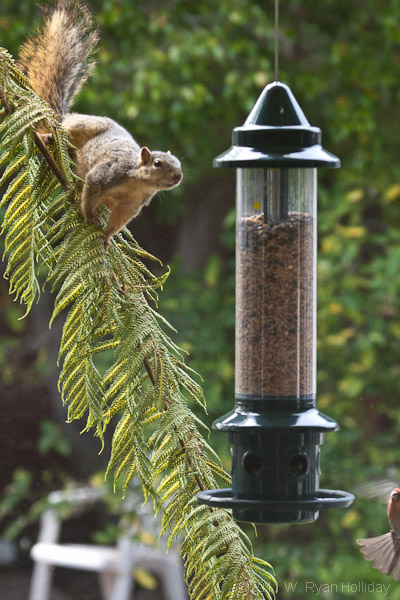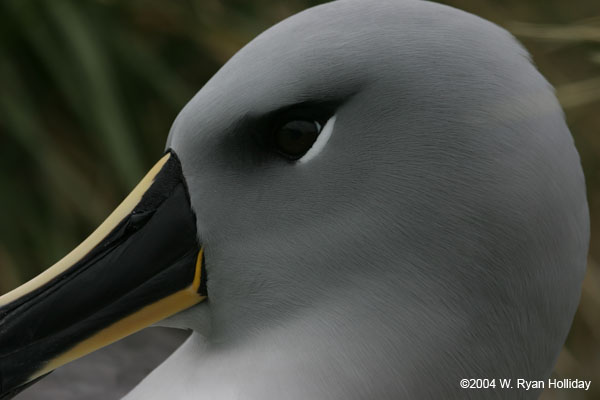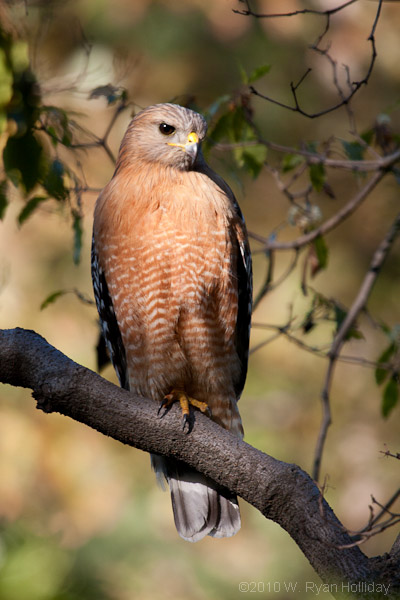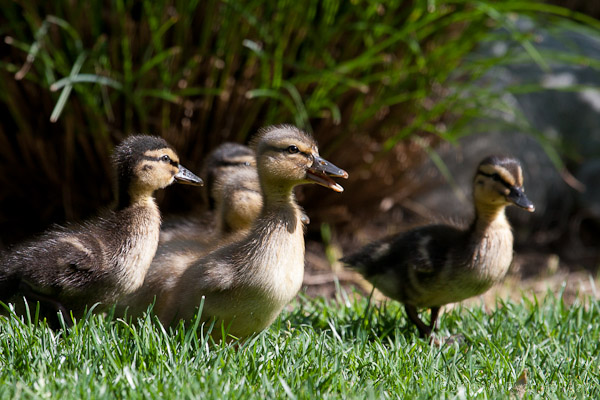The London Olympics start in about five months, and I won’t be attending them. However, sixteen years ago when the Olympics were in Atlanta I was there. Seeing as how that took place in the pre-journal days, it seems prudent to recount the adventure before senility sets in and I either forget the experience entirely or mis-remember and start believing that I won a bronze in men’s rhythmic gymnastics.
In the summer of 1996 I was working as a glorified janitor for the mechanical engineering department at Case Western Reserve University. Money was tight – $6.25 an hour didn’t go very far, even in days before monthly cell phone bills – and options for vacations were limited. However, about a week before the Games started it struck me that I’d wanted to go to the Olympics my entire life, and they were in the United States for only the second time since 1932.
My boss’s response to a request for a few days off to go to the Games consisted of three questions: “Do you know how you’re going to get there?”, “Do you have anywhere to stay?” and “Do you have any plan at all?”. After answering all of these in the negative, the extraordinarily cool Dave Conger laughed, told me to have the time of my life, and asked that I bring him back “something weird”.
At the time Greyhound was offering a student pass for something like $100 that allowed you to ride any bus to any destination, as often as you wanted, for one week. As a result, the transportation and lodging plan that developed was to take Greyhound round-trip to Atlanta, and to then sleep on overnight buses each night so I’d have a safe-ish place to spend the evening. The economics of this plan were hard to argue with, although the logistics left something to be desired. Nevertheless, my good friend Mike Collins dropped me at the Greyhound station after work and, bus ticket in hand, the adventure began.
Event tickets were limited to the cheapest ones available: $11 for men’s field hockey on July 21, $7 for USA vs. who-cares in baseball on July 22. While waiting in a long line to pick up tickets strangers I met started offering places to sleep – one guy had a rental apartment downtown and told me he’d simply give me the key, free of charge. I was twenty at the time and very self-conscious about always wanting to be able to repay any kindness, so I declined, but was nevertheless blown away at how generous and trusting people were being. Had I known that sleeping on a Greyhound would prove almost impossible, and that night two would find me curled up outdoors in a construction site in the suburbs, I might have reconsidered.
The Olympics itself were pretty much everything that could have been hoped for. I sat in downtown Atlanta in front of a fifty foot tall TV and cheered with a few thousand people when Kerri Strug clinched the gymnastics gold medal on a sprained ankle. I watched road cycling in the rain (because it was free) and met a former professional cyclist who insisted I sleep on her family’s couch that night. I scalped a ticket to swimming for less than face value shortly after the event started, took off running the two miles or so towards the swimming venue, and was later escorted out of the Athlete’s Village by Marines after unknowingly running through it and somehow getting past the first security checkpoint.
The highlight of the events I attended came after scalping a ticket to the cheapest tennis match available. On the bus there I met guy from Belgium who had a ticket to center court, and he told me that he would change tickets with me for one match so I could experience seeing the best players in the world. After enjoying a match between two obscure players on Court 14 (or wherever my ticket was for) I met him outside of center court and he told me that, instead of exchanging tickets, I should follow him and act like I knew what we were doing. No one checked my ticket closely, and we confidently strolled down next to the court and sat in the second row – apparently the corporate seats were all filled with squatters who then enjoyed matches featuring Gabriela Sabatini, Monica Seles, and Andre Agassi. After the third match I got up to get water and was busted on the way back in, but it was still a ridiculously cool experience.
After four days in Atlanta I came back to Cleveland, a Korean press guide in hand for Dave. The cyclist and the Belgian and I kept in touch for some time thereafter, recalling the few days that we had shared such excitement. While I won’t be in attendance for London, it’s a good bet that in the future the Olympic experience will be revisited, albeit with slightly more comfortable transportation and lodging that includes a bed.
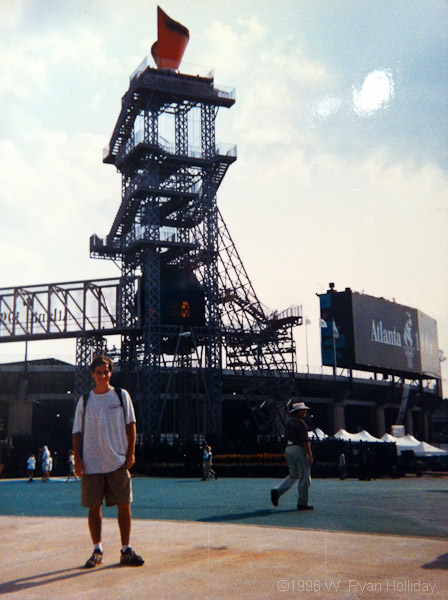
In front of the Olympic Torch in Atlanta, 1996. I had mad hair.


